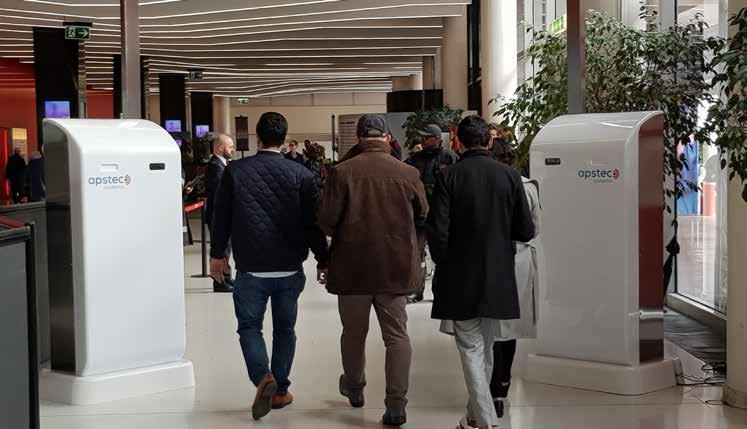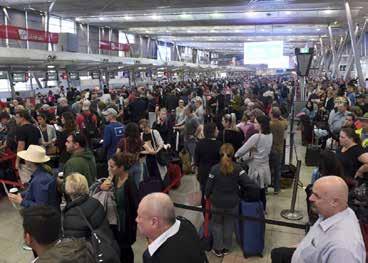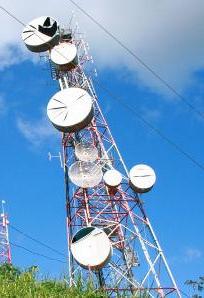
8 minute read
A new normality in security screening?
The Coronavirus crisis is one of the most disruptive events since the Second World War. Whilst governments around the globe strive to get to grips with the situation and plan for a return to normality it is interesting to reflect on exactly what normality will look like. It’s almost certainly going to be different to normality as we understand it today.
Whether or not we’ll experience anything like it again in the near future is a moot point but what is for sure is that we have to learn the lessons of the current situation and make sure that we do all that we can to prevent creating the conditions for such a pandemic to grip the world in this way again. The security community can make a contribution to this by ensuring that it delivers technology and operational concepts that respect some of the mitigation measures adopted during the recent crisis. In particular, concepts that result in creating queues and congestion, thereby placing people in close proximity to each other for prolonged periods, need to be avoided. Likewise approaches that expose staff and the public alike to a high level of personal physical contact or that require multiple people to handle pieces of equipment need to be reconsidered. Nowhere is this more applicable than in security screening scenarios involving the protection of crowded places. The Daily
Advertisement
Telegraph , quoting a University of Nottingham and the Finnish National Institute for Health and Welfare study, concluded that whilst travelling by public transport was a significant health risk in general, security checks are thought to be the highest risk areas. Securing crowded places from the threat of terrorism has been a clear requirement for many years. However, implementing such measures in a proportionate way that is effective, practical and affordable without disrupting daily life is extremely challenging. Whilst the natural response to the mass casualty attacks, that hit Europe from the early 2000s, was to adopt security regimes that were in existence at the time, these regimes were never designed for crowded public places and high throughputs; we need to move on. Intrusive approaches that originated in aviation security are of little practical use (slow, designed for aviation threats and requiring a high level of staffing) and are disproportionately expensive to deliver at a scale large enough to meet the required throughput of people when it comes to crowded places. The large queues associated with these types of security approaches that often build up outside of the venue are attractive targets in their own right. With reference to the current crisis, they are high density, high contact environments and at odds with the health lessons identified and mitigation measures implemented to date. In recent years, great effort, much of it driven by governments and international defence and security bodies (NATO in particular), has been put into developing practical means of screening large numbers of people for the most serious terrorist threats. These efforts have been rewarded and technologies have been introduced to the market that offer a proportionate, efficient and cost-effective solution. A range of technologies, some passive others active, some narrow beam standoff devices and others wide angle devices offer a choice for the end user to

meet various scenarios and requirements. An example of these high throughput systems is Apstec’s Human Security Radar (HSR), which is a wide angle, real time and autonomous active system.
HSR is a free flow technology that enables the security screening of thousands of people an hour. The system uses active centimetre wave to detect the presence of explosive threats carried on the body or in body worn bags, and detects metallic and non-metallic fragmentation associated with IEDs. Metal detection technologies offer the opportunity to detect firearms and bladed weapons, and, where the operational need exists, options allow more stringent requirements relating to smaller threat items to be met.
The inspection zone of HSR is several meters wide and up to 6 metres deep, allowing the free flow of people through the system. The free flow nature of the system and the large inspection zone allows for social distancing between people, where the requirement exists. People can adopt their own personal space as they see fit or as directed as part of strategy to manage health risk. The whole operation requires only a handful of security staff but may deliver the throughput and security effect of 10-15 conventional security lanes, or more, where a manual screening or traditional approach is used.
Although HSR is unique in some ways, there are several technologies that offer robust and mature capabilities that are designed specifically for protecting crowded places. There’s no single technology that appears a perfect fit for every case but the technologies that exist meet a wide range of scenarios. In many instances, it is conceivable that a number of different but complementary screening technologies may be used to contribute to an effective operational concept. What these technologies all have in common is that they aim to deliver as high a throughput as the technology allows in a way that is simple to operate and that minimises the disruption to people passing through the systems.
Of course, it’s not all about high throughput, security systems such as HSR also offer a much-improved personal experience for those passing through them. No divestment is required, personal contact is avoided for the vast majority of people and high value clients are offered a service that is more consistent with their expectations.
As high throughput systems allow for several people at a time to pass through them, they lend themselves to behavioural detection where abnormal behaviour can be identified in direct comparison with others. These types of system are considered to be a good triggers for behavioural detection and
many security regimes draw heavily upon the integration of the technology and an operational concept that incorporates behavioural detection.
Further opportunities exist to integrate high throughput systems with other technologies such as video tracking, biometric identification systems, and, for some, thermal cameras that could provide a health monitoring capability. Of course, the integration of these technologies would need to be done sensitively and there’s a risk that the responder becomes overwhelmed. It is also clear that in some cases different alerts will require different responses but integrating biometrics with high throughput security screening is becoming a common request. Combining biometric technologies with a technology like HSR not only allows people of interest to be detected but also offers the prospect of implementing access control and security screening in a single seamless operation. These are interesting developments and provide a means of doing all of this in a way that minimises health risks.
To cap it all, high throughput systems offer a cost-effective solution. Whilst capital expenditure on security screening is a significant factor, the cost of people will almost always outweigh the cost of equipment over the life of a system, and generally do so many times over. Being able to deliver so much security effect with such a small work force is great and cost effectiveness a significant advantage with these systems.
When confronted by mass casualty scenarios the security world adopted what seemed a sensible approach at the time and used aviation type security. That this approach wasn’t well suited to securing crowded places was outweighed by the imperative of just doing something in the face of a changing threat environment. However, high throughput security screening technologies that have spent years in development are available and offer a bespoke approach to securing the most attractive targets. They are cost effective, respect the public’s right to get on with day to day life with the minimum of disruption and offer a simple and agile approach. In light of the lessons of the Coronavirus crisis, these systems can deliver an operation that is low contact thereby, minimising health risks, and which has the scope for further technology integration to provide a more comprehensive security outcome. They have the ability to significantly reduce costs and, for once, have the prospect of contributing to the bottom line of the business.

Now is a good time to move on from an historical security approach and to consider how state of the art high throughput security screening systems can help mitigate terrorist and health risks, and do so in a way that offers considerable cost benefit. For governments, businesses and for the reassurance of the general public, there should be an expectation that security contributes to the fight against terrorism in a way that also embraces best practice identified during the Coronavirus crisis. If so, it is highly likely that this will become the new normality.
By Stephen Cooper, OBE, COO Apstec Systems
www.cip-association.org

Join the Community and help make a difference
Dear CIP professional
I would like to invite you to join the International Association of Critical Infrastructure Protection Professionals, a body that seeks to encourage the exchange of information and promote collaborative working internationally. As an Association we aim to deliver discussion and innovation – on many of the serious Infrastructure - Protection - Management and Security Issue challenges - facing both Industry and Governments. A great new website that offers a Members Portal for information sharing, connectivity with likeminded professionals, useful information and discussions forums, with more being developed. The ever changing and evolving nature of threats, whether natural through climate change or man made through terrorism activities, either physical or cyber, means there is a continual need to review and update policies, practices and technologies to meet these growing and changing demands. Membership is currently FREE to qualifying individuals - see www.cip-association.org for more details.
Our initial overall objectives are: • To develop a wider understanding of the challenges facing both industry and governments • To facilitate the exchange of appropriate infrastructure & information related information and to maximise networking opportunities • To promote good practice and innovation • To facilitate access to experts within the fields of both Infrastructure and Information protection and resilience • To create a centre of excellence, promoting close co-operation with key international partners • To extend our reach globally to develop wider membership that reflects the needs of all member countries and organisations

For further details and to join, visit www.cip-association.org and help shape the future of this increasingly critical sector of national security. We look forward to welcoming you.










